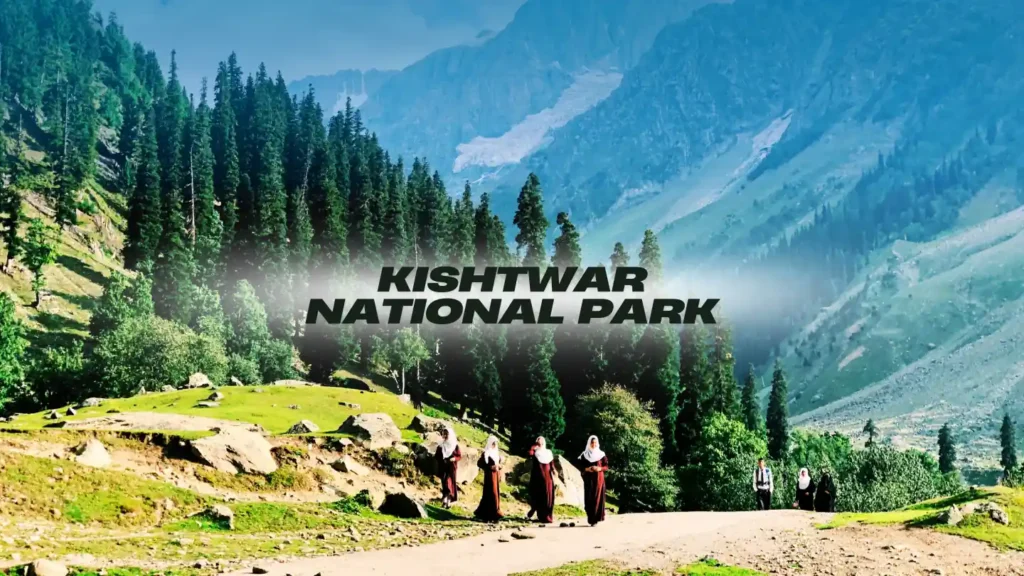Hidden in the Himalayas, far from tourist hubs, Kishtwar National Park boasts peaks, meadows, and a diverse array of rare wildlife. Declared a national park in 1981, it spans 2,190.5 sq km, ranking among northern India’s largest high-altitude parks.
Table of Contents
Location and Boundaries
Kishtwar National Park is situated approximately 40 km from Kishtwar town in Jammu and Kashmir, nestled within the Great Himalayas. The park’s boundaries are marked by major rivers and ridges:
- Rinnay River to the north
- Kibar Nala catchment to the south
- The Great Himalayan divide to the east
- Marusudar (Marwah) River to the west
This rugged terrain, ranging from 1,700 m to 4,800 m, features glaciers, valleys, and snow-fed streams that converge into the Chenab River.
Kishtwar National Park Map
A Glimpse into the Landscape
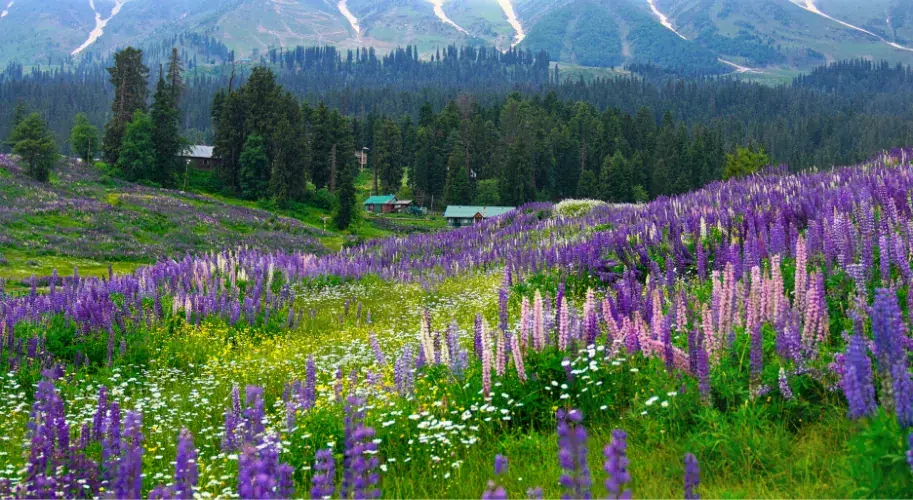
Visitors find steep valleys and high ridges that lead to stunning glacial basins. The rocks—granite, gneiss, schist, and marble—reveal the story of the Central Crystalline belt. Shallow, gravelly, slightly alkaline soils support alpine vegetation.
Climate of the Park
Unlike other parts of India, the monsoon has only a mild influence here.
- Rainfall averages 741–827 mm annually, with peaks during March–April and again in July–August.
- Heavy snowfall blankets the park in December and January, turning it into a white wonderland.
- Summers are mild, with temperatures ranging from 11°C to 35°C, while winters can be harsh, dropping to -7°C in January.
Vegetation and Forest Types
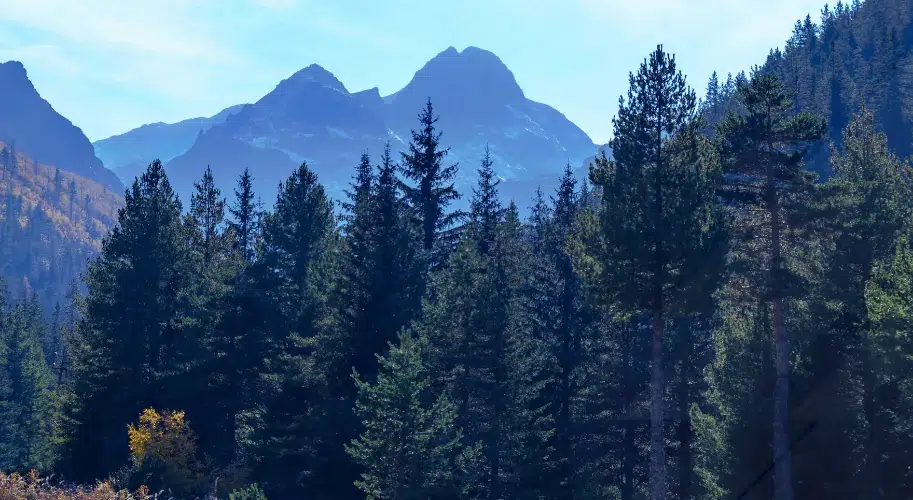
Kishtwar National Park boasts 13 distinct vegetation types, thanks to its wide range of altitudes. Here’s how the greenery unfolds:
- 1,700 m – 2,400 m: Cedar, blue pine, walnut, horse chestnut, maple, poplar, hazel, and yew dominate.
- 2,400 m – 3,000 m: Forests of silver fir and spruce mixed with cedar and blue pine thrive.
- Around Dachan Range: Rare stands of chilgoza pine add a unique charm.
- 3,000 m – 3,700 m: Sub-alpine silver fir and birch forests gradually blend into rhododendron scrub.
- Above 3,700 m: Alpine pastures open up, rich with wildflowers in summer.
Wildlife of Kishtwar National Park
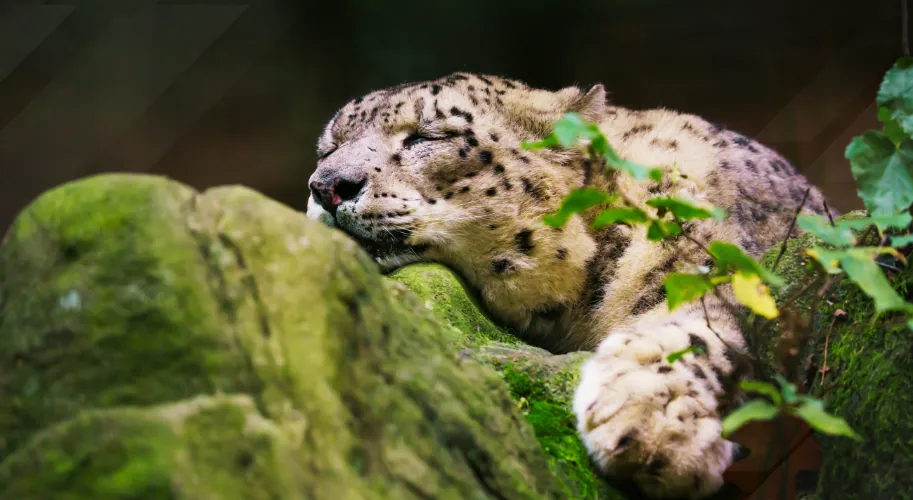
The park serves as a sanctuary for wildlife enthusiasts and birdwatchers alike, offering a living tableau of rare and magnificent species.
Key Species
- Mammals: Snow leopard, Himalayan brown bear, musk deer, hangul (Kashmir stag), ibex.
- Birds: Himalayan snowcock, golden eagle, Himalayan monal, koklass pheasant.
This combination of predators, herbivores, and high-altitude birds makes the park an important conservation area.
People and Culture Around the Park

Kishtwar is more than wilderness; it’s also home to vibrant communities. Kashmiris, Thakurs, Gujars, Rajputs, and Brahmans make up the region’s culture. Many families farm near the park.
Nomadic graziers pass through, with about 1,115 families bringing 25,000 livestock to graze each summer. This traditional life adds cultural significance but poses conservation challenges.
Why visiting Kishtwar National Park
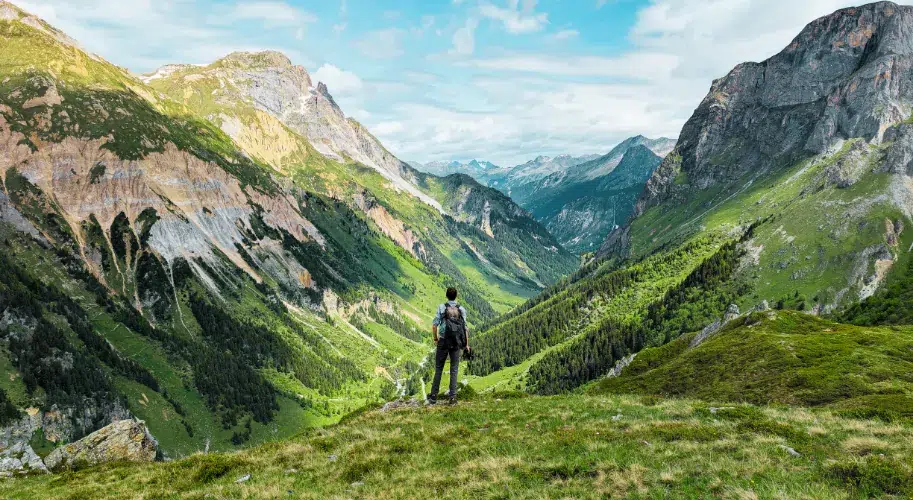
Kishtwar isn’t for mass tourism. It draws those craving solitude, raw beauty, and adventure. Visitors enjoy:
- Trekking through alpine meadows and glacial valleys
- Camping under starry skies at high altitudes
- Spotting rare animals in their natural habitats
- Exploring untouched forests and riversides
Best Time to Visit
The best time to visit is May to October, when the snow melts and trails open. Meadows are green, rivers are lively, and wildlife is easier to spot. Winters are scenic but tough—best for experienced trekkers and mountaineers.
.
Conclusion
Kishtwar National Park may not be as well-known as other Indian parks, but its unspoiled beauty is unforgettable. Vast landscapes, rare wildlife, diverse forests, and cultural heritage await travelers seeking an offbeat Himalayan experience.
FAQs
Q: Where is Kishtwar National Park located?
A: Kishtwar National Park is in Kishtwar district, Jammu and Kashmir, about 40 km from Kishtwar town.
Q: When was Kishtwar National Park established?
A: It was declared a national park on 4 February 1981.
Q: What is the area of Kishtwar National Park?
A: It spans 2,190.5 square kilometers in the Himalayas.
Q: Which animals are found in Kishtwar National Park?
A: Snow leopards, Himalayan brown bears, musk deer, ibex, and hangul are commonly found here.
Q: What is the best time to visit Kishtwar National Park?
A: May to October is the best time, as trails are clear and meadows bloom.
Q: What type of vegetation grows in Kishtwar National Park?
A: The park has cedar, blue pine, silver fir, spruce, birch, rhododendron scrub, and alpine pastures.

